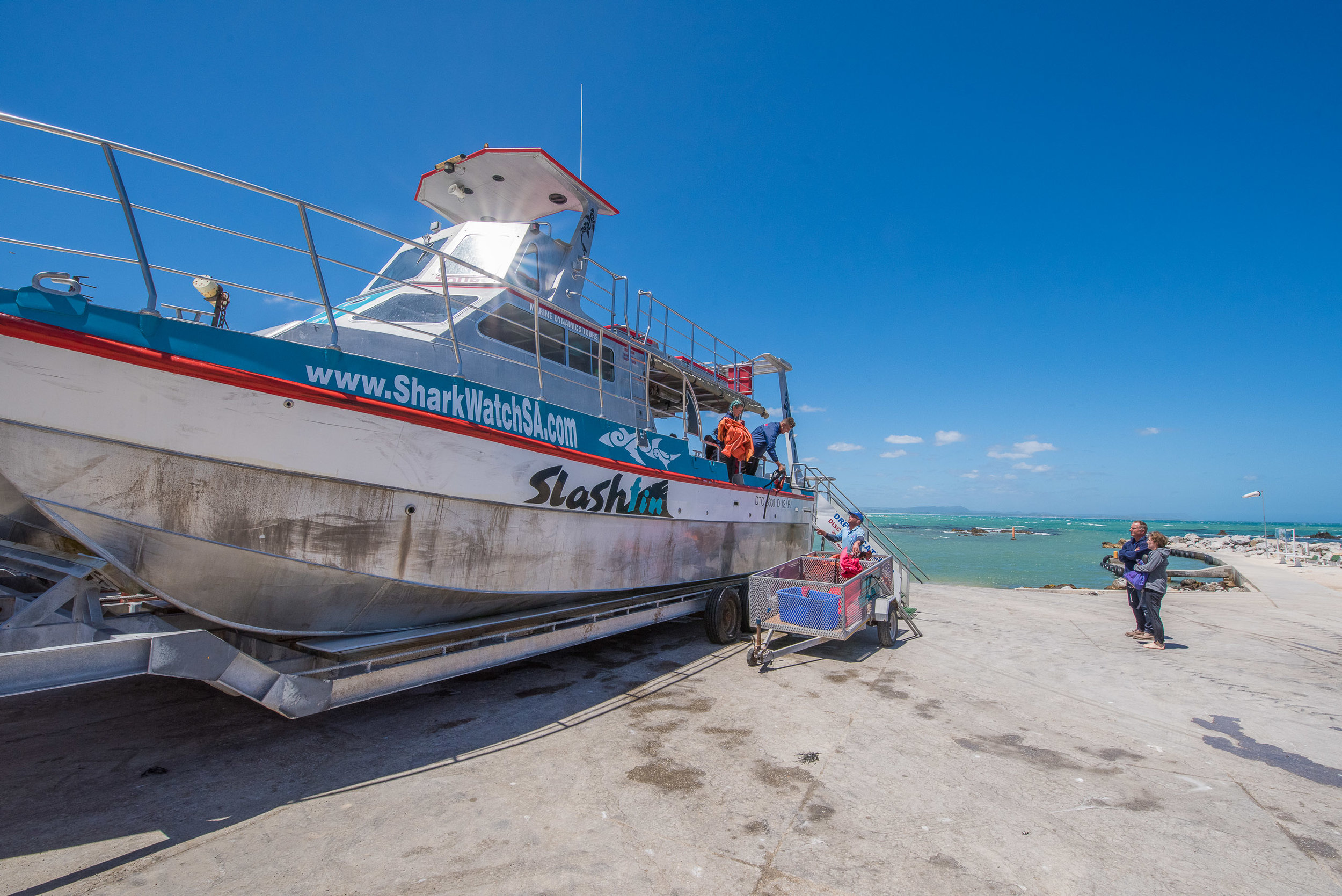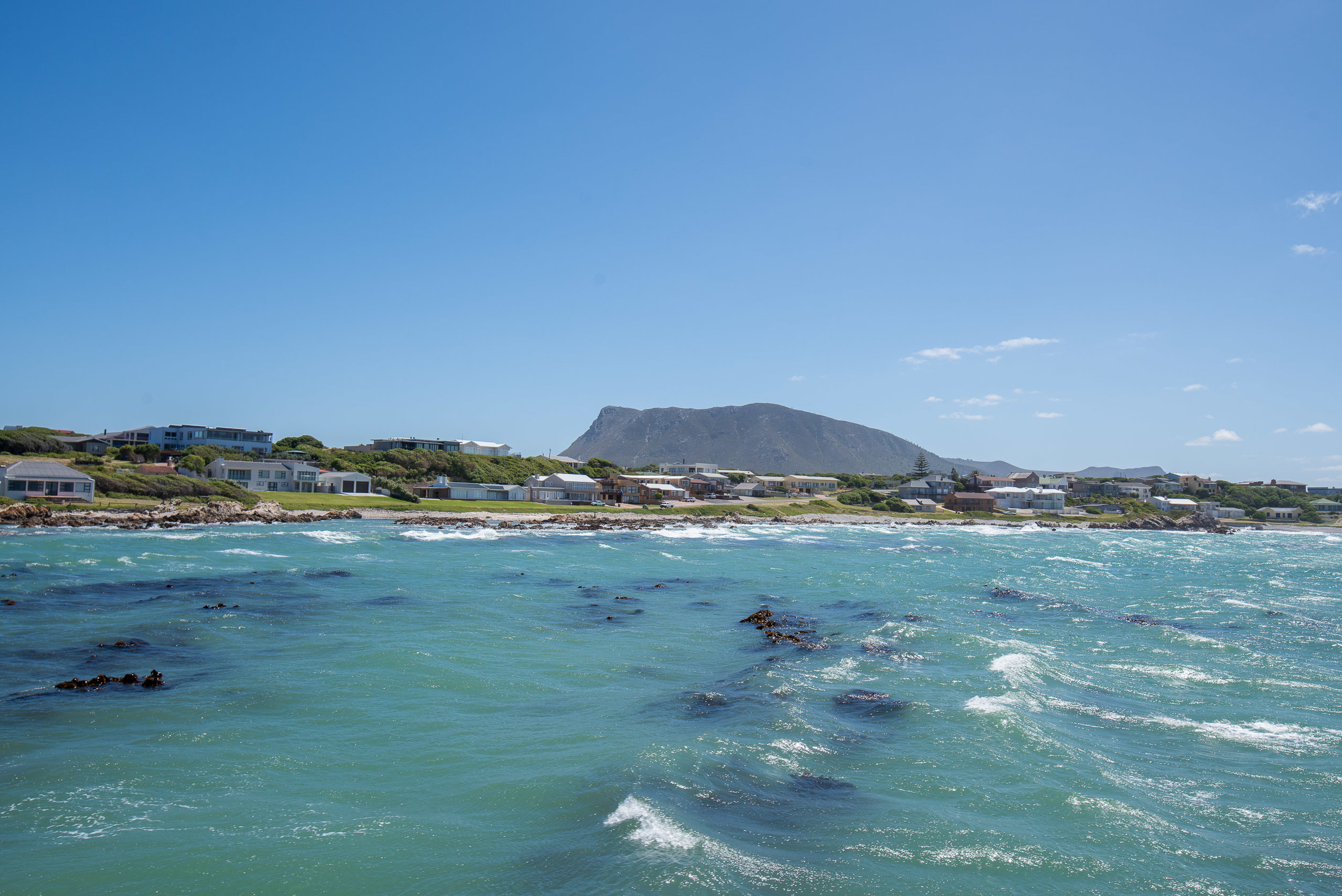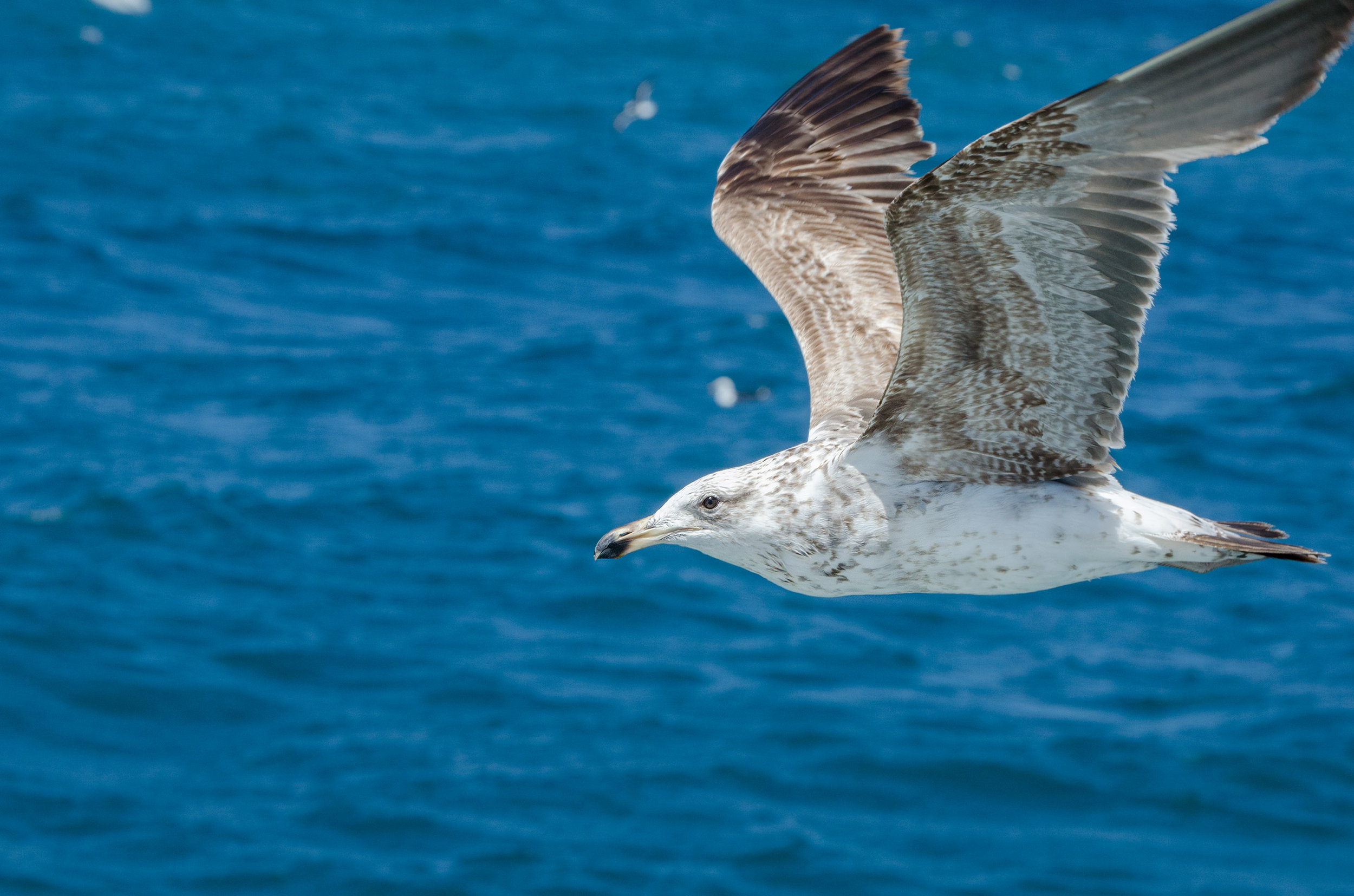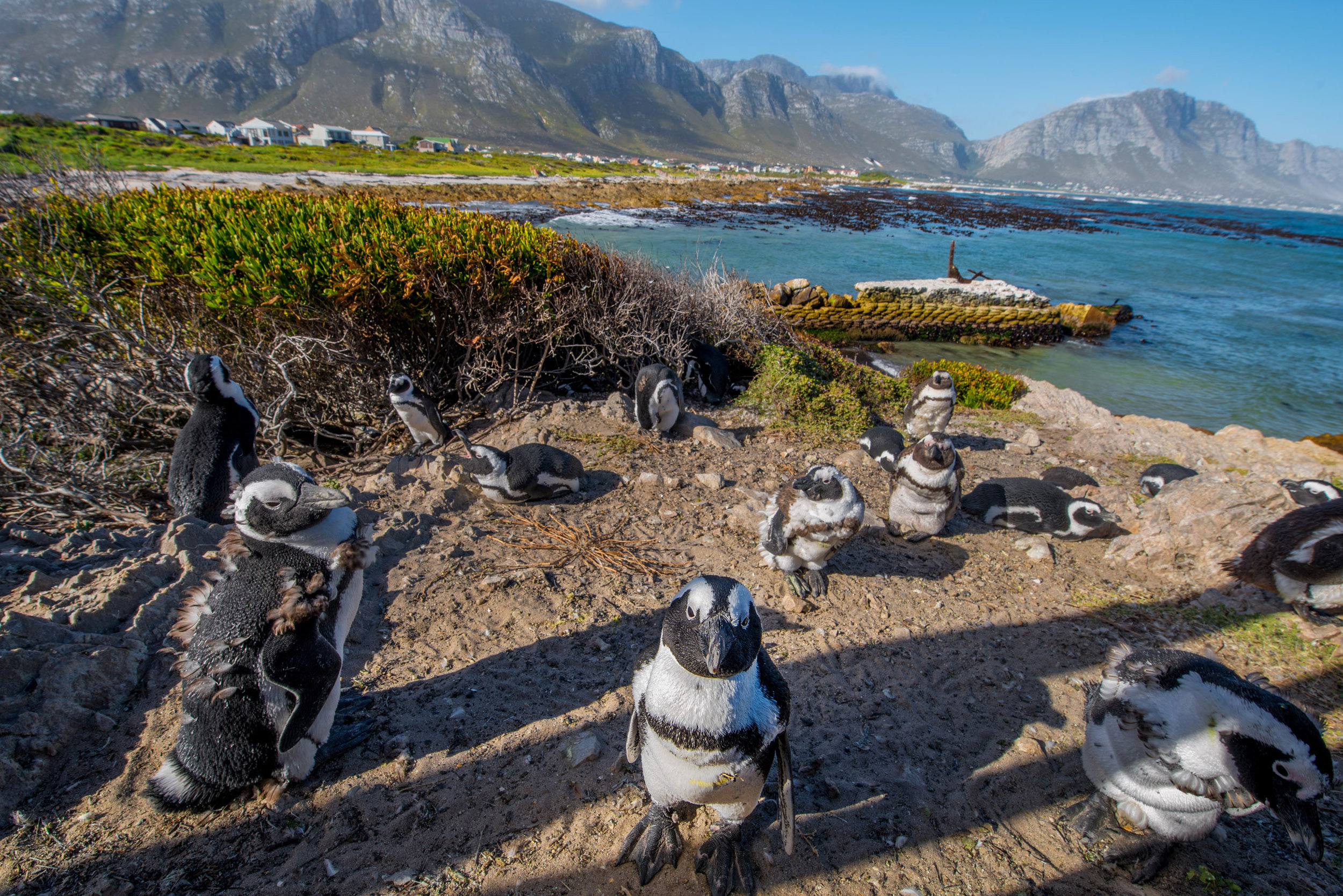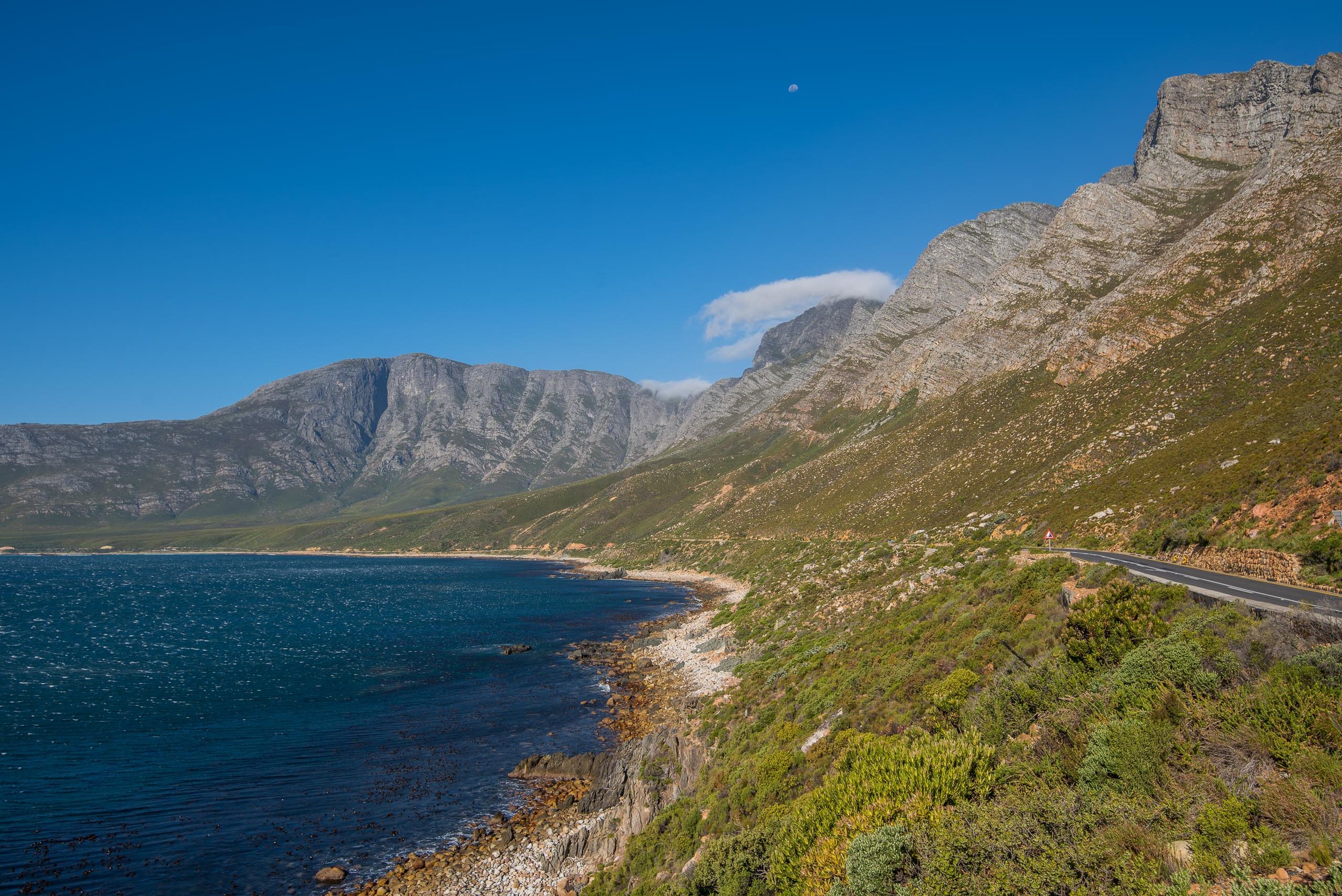Shark Diving
Shark Diving: Willingly dunking oneself in fifty degree sea water known to be infested with toothy fishes ranging from a mere three meters in length up to twice that. (Seems like an alternative definition of insanity, no?)
We had arranged to go diving with Great Whites, something Donna has been keen to do for years, near the town of Gansbaai. We'd followed a fairly extensive Dramamine regimen the previous 24 hours in an attempt not to turn the whole experience into one of the more miserable of our lives. Dramamine the night before. Dramamine in the morning. Dramamine on the ride in. Hungry? Have a Dramamine. Water? Coffee? Wine? You're drinking anyway, why don't you pop a Dramamine with that. Oh, sorry ... you shouldn't have alcohol the night before going out on a boat. In the cold southern ocean. Which is teeming with large sharks.
Yea, right.
The Dramamine regimen was a good thing. The winds were probably coming in at a steady 20-30 knots pushing a pretty good swell before them. The temperature onshore was balmy in shorts and a t-shirt. So we were quick to wonder why many of the staff appeared to be wearing parkas when we got on the boat. A parka? It's Africa. A few minutes later we, too, were wearing everything we had with us: t-shirt, long sleeve shirt, fleece, rubber Helly Hansen, hat,... Didn't take long to start eyeing other people's kit, either. "Excuse me, are you gonna wear that? Or could I just, maybe, borrow it ... just for a moment?"
We headed southeast for about twenty minutes out of the harbor. The shark boats, and there are a number of companies operating out of Gansbaai, all do a bit of chumming to bring sharks in. The local flocks of Kelp Gulls have, thus, learned to associate the boats with food. They kindly provide a personal escort out from the harbor. From the top deck you can get a hint of what it might be like to soar with the flighted crowd.
All right. All that kit you've finally got on so that you almost, almost, can't feel the bite of the breeze in your soul anymore? Take it off — and without dropping it overboard in the heaving waves or having it flung forty yards to starboard by the "breeze". Strip down till you're wearing nothing but your skivvies and goose pimples on the wallowing deck, and then try, just try, to pull on 7mm of neoprene designed specifically to fend off all attempts to wear it. And try not to fall off the bench and crack your head open or go over the railing while you're wrestling with this thing.
Feeling the magic, yet?
For the record, there is an open debate about the ethics of cage diving with Great Whites (or any shark species for that matter) with passionate opinions and valid points made on each side. See, for example, Andrew Evans article — plus the many comments beneath it both for and against. We went out with Marine Dynamics which is involved in a number of conservation efforts. For what it's worth, we found their staff to be genuinely passionate about White Sharks and their conservation.
Chumming the water off Gansbaai, South Africa attracts both sharks and gulls.
At most of the outfits in Gansbaai, a large steel cage is hung off the side of the boat. You drop into the cage, the top of which floats about a foot and a half above water level, and wait for the sharks to appear. When they do, you keep your hands and feet on railings well within the cage to prevent opportunistic nibbling.
Unless, of course, this happens. Then you get to keep the wet suit as a souvenir, cause, well... you know.
Alas, no Great Whites were to make an appearance on the day we were out. A few weeks before, a pair of Orcas had come through the bay and killed at least five Great Whites within a matter of days. Orca predation was confirmed by autopsy after Great White carcasses began washing ashore. In each case, the sharks appeared to have sustained a single bite behind the pectoral fin that cleanly removed their nutrient rich liver. The rest of each shark remained intact. This was only the third time Orca attacks on Great Whites had been documented, and the first time in African waters. After the attacks the remaining Great Whites left the bay. Six weeks later, there were only beginning to be spotty sightings of them again, though not on the day we were there.
There were, however, plenty of Copper Sharks, another beautiful species of shark that can reach about 11 feet in length. And I have to say, while spending fifteen minutes in bone jarringly cold water, barely 50 degrees, doesn't rank high on the list of pleasant ways to spend fifteen minutes, seeing this incredible animal slip by a few inches in front of you, absolute grace in motion, and look at you, look at you, with a big piercing eye is a pretty cool experience.
That said, the water's warmer on the Great Barrier Reef. And Black Tips aren't quite as toothy.
A trio of Copper Sharks gathers near the Marine Dynamics cage during an outing in Gansbaai, South Africa.
After an afternoon on the boat, we started back toward Cape Town to catch our flight to Windhoek in the morning. Along the way we were able to enjoy the stunning scenery of Africa's southern coast — and a couple members of its impressive fauna. We almost sped past a sign for Penguins (!!). We'd half-heartedly attempted to see the colony at Boulder's Beach a few days before, but given up after just a brief sampling of the Cape Peninsula's traffic. Could it really be that we could see them elsewhere without the crowds? Indeed, there's actually a Penguin Reserve at Betty's Bay, southeast of Cape Town. African Penguins are found only on the southwestern coast of Africa. Their population was estimated to top 4 million at the beginning of the 19th century. Today, only about 50,000 are left, resulting in their being listed as an endangered species. If current population declines continue, they may be extinct by the mid-2020s.
There also happens to be a colony of Rock Hyraxes at Betty's Bay. They're about the size of a black-tailed prairie dog in the United States. Look a little similar, too. Maybe like a cross between a prairie dog and a pika. So, they're a rodent, then, eh?
Not even close.
I'll give you a hint. Though they weigh in at only a few pounds they have curiously elongated incisors. Rock hyraxes closest extant relatives are actually elephants and sea cows. Their genetic paths diverged about 68 million years ago. Unlike most elephant and sea cow species, however, hyraxes are as, yet, not endangered!
From Betty's Bay we headed on back through Cape Town to a hotel near the airport, the Protea Durbanville. Nice enough on the outside, but the rooms were a bit cramped and could do with a little updating and repair. Oh, and the walls are a bit thin. And there seemed to be quite a few folks walking around fairly late talking fairly loudly.
The Protea Durbanville. Clean and safe, but with cramped rooms, little sound-proofing, and a good bit of noise.

